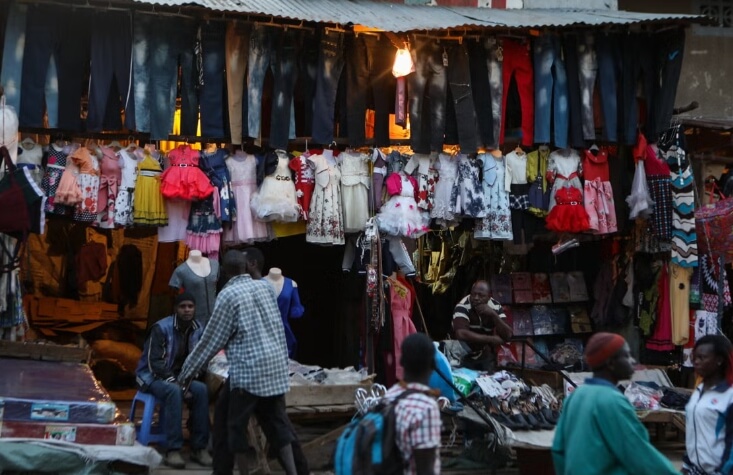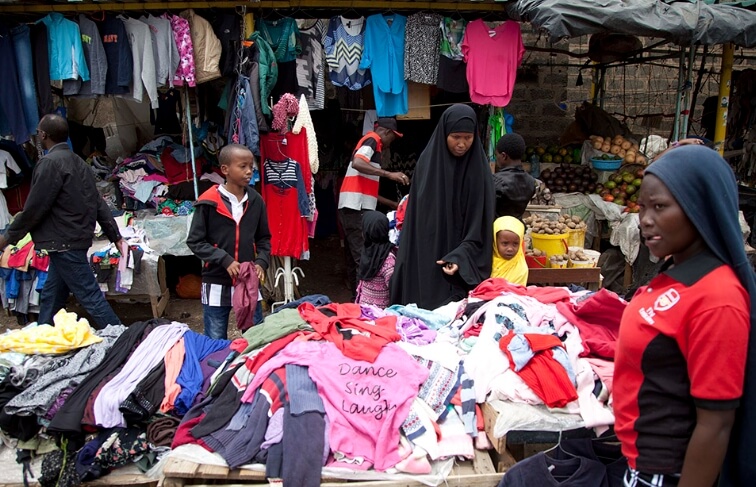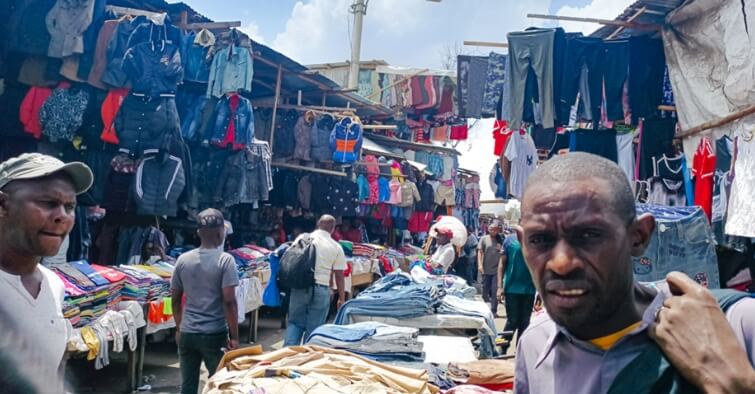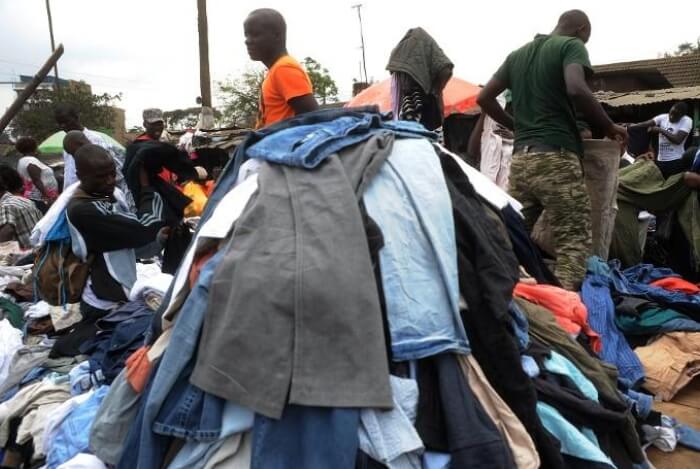In recent years, the demand for Kenya used clothes has soared, driven by the need for cost-effective and sustainable fashion solutions. As the secondhand clothing industry gains momentum, Kenya stands out as a top market for exporters. The popularity of thrift shopping among Kenyan consumers, combined with growing interest in sustainable fashion, has fueled this demand. For businesses looking to tap into the Kenya used clothes market, now is the perfect time to explore the potential of this fast-growing industry.

1. Introduction: Why Kenya is a Hotspot for Used Clothes Trade
Kenya used clothes have become a vital part of the country’s retail landscape, attracting both local consumers and international traders. The combination of affordability and sustainability has turned Kenya into a prime destination for secondhand clothing imports. With a rising demand for quality used garments, the market presents enormous opportunities for businesses looking to expand in East Africa.
Overview of the Growing Demand for Kenya Used Clothes
The demand for Kenya used clothes continues to grow as more consumers seek affordable fashion alternatives. Many Kenyan shoppers prefer secondhand clothing due to the variety, quality, and cost savings it offers compared to new items. As a result, the market for used clothes has flourished, creating a profitable space for global exporters.
The Role of Affordability and Sustainability in the Market
Affordability is one of the main reasons why Kenya used clothes are so popular. Many consumers can access high-quality, branded clothing at a fraction of the price of new items. Moreover, the increasing awareness of sustainability and the desire to reduce textile waste has further boosted the appeal of secondhand clothing in Kenya, aligning with global efforts to promote eco-friendly fashion.

2. Key Drivers of Kenya’s Used Clothes Industry Growth
Several key factors have contributed to the rapid growth of the Kenya used clothes industry. From cultural preferences for thrift shopping to the influence of global secondhand fashion trends, Kenya has emerged as a leading market for used clothing. Additionally, economic conditions in the country make used clothes an attractive option for consumers seeking cost-effective solutions.
Thrift Shopping Culture and Consumer Preferences
The culture of thrift shopping is deeply embedded in Kenya, where consumers appreciate the value of buying used clothes. Kenya used clothes offer a unique blend of affordability and quality, making them the go-to choice for individuals looking to stay fashionable on a budget. This preference for secondhand clothing has fueled steady market growth.
Influence of Global Secondhand Fashion Trends
Global trends in sustainable fashion have also reached Kenya, where the demand for secondhand clothing continues to rise. Kenya used clothes reflect broader shifts in consumer behavior, as more people worldwide embrace secondhand fashion as a sustainable and stylish alternative to fast fashion.
Economic Factors Fueling the Demand for Used Clothes in Kenya
Economic challenges have further propelled the growth of the Kenya used clothes market. With limited disposable income, many Kenyan consumers turn to secondhand clothing as a cost-effective way to purchase high-quality apparel. This has made used clothes a vital part of the local economy, offering both savings for consumers and profits for retailers.
3.Opportunities for Exporters in the Kenya Used Clothes Market
The Kenya used clothes market offers significant opportunities for exporters looking to tap into the country’s booming secondhand fashion industry. As demand for affordable clothing continues to increase, exporters can benefit from Kenya’s growing market by supplying quality used garments that meet local tastes and preferences.
High Demand for Affordable Fashion
Kenya used clothes are in high demand due to their affordability and accessibility. Exporters can capitalize on this by offering a diverse range of secondhand items that cater to various segments of the population, from casual wear to formal attire, ensuring their products resonate with Kenyan consumers.
Growing Interest in Sustainable Clothing
As sustainability becomes a more prominent concern, many Kenyan shoppers are turning to secondhand fashion as an eco-friendly alternative. Exporters in the Kenya used clothes market can tap into this trend by promoting the environmental benefits of reusing garments, aligning their business with consumer values.
Market Segmentation: Wholesalers, Retailers, and Consumers
The Kenya used clothes industry caters to a wide range of players, including wholesalers, small retailers, and individual consumers. Exporters should understand the distinct needs of each segment to tailor their offerings and maximize profitability in the Kenya used clothes market.
4.Challenges in Entering the Kenya Used Clothes Market
Despite the many opportunities, entering the Kenya used clothes market comes with challenges. From navigating complex import regulations to understanding local fashion preferences, exporters must be well-prepared to face these obstacles in order to succeed.

Navigating Kenya’s Import Regulations and Tariffs
Kenya used clothes imports are subject to specific regulations and tariffs, which can pose challenges for businesses unfamiliar with the local market. Exporters need to ensure they comply with all import requirements to avoid delays or fines, which can impact profitability.
Understanding Local Market Preferences
The success of Kenya used clothes imports depends on an understanding of local consumer preferences. Kenyans tend to favor certain types of clothing, particularly those that align with current fashion trends or offer durability. Exporters must research the market thoroughly to deliver the right products.
Competition from Established Suppliers
The Kenya used clothes market is highly competitive, with numerous established suppliers already dominating the space. New entrants must differentiate themselves by offering unique products, competitive pricing, or superior quality to carve out a share of the market.
5.Strategies for Success in Kenya’s Thriving Used Clothes Market
To succeed in the Kenya used clothes market, businesses must implement strategic approaches that align with local demand and market dynamics. Building strong relationships with suppliers, adapting to fashion trends, and leveraging marketing techniques are key to thriving in this competitive industry.
Building Strong Supplier Networks
Establishing a reliable network of suppliers is crucial for success in the Kenya used clothes market. Businesses that build strong relationships with trustworthy suppliers can ensure a steady supply of high-quality secondhand garments, which is essential for meeting the demands of Kenyan consumers.
Adapting to Local Fashion Trends and Preferences
Kenya used clothes buyers are influenced by local fashion trends, which can vary depending on regions and seasons. Exporters who stay informed about these trends can better cater to the market, offering products that resonate with consumers and keep their businesses competitive.
Marketing and Distribution Tactics for Penetrating the Market
Effective marketing and distribution are vital for any business entering the Kenya used clothes market. Companies that invest in targeted advertising, build an online presence, and work with local retailers will have a better chance of gaining traction and expanding their market share.
6. Future Outlook: The Evolving Landscape of Kenya’s Used Clothes Industry
The future of the Kenya used clothes industry looks bright as both local and global trends continue to support its growth. With increased awareness of sustainability and expanding access to e-commerce, the industry is expected to grow even further, providing new opportunities for businesses in the secondhand fashion sector.
The Impact of Sustainability Initiatives
Sustainability initiatives are reshaping the Kenya used clothes market, as both consumers and businesses focus on reducing waste and promoting eco-friendly practices. This shift toward sustainability is expected to drive continued demand for secondhand clothing in the coming years.
Growth Projections for the Secondhand Fashion Market
The Kenya used clothes market is projected to grow significantly in the near future, as more consumers embrace secondhand shopping and sustainability. Exporters and retailers alike can benefit from this trend by positioning themselves as leaders in the eco-conscious fashion movement.
How Technology and E-commerce Are Shaping the Industry
Technology and e-commerce are playing an increasingly important role in the Kenya used clothes market. As more consumers shop online, businesses that invest in digital platforms and logistics will be better equipped to serve this growing demand and expand their reach within Kenya.

7. Conclusion: Why Now is the Time to Enter Kenya’s Used Clothes Market
Now is the perfect time to enter the Kenya used clothes market. With rising demand, growing interest in sustainability, and favorable economic conditions, the opportunities are vast. By understanding the market dynamics and adopting the right strategies, businesses can thrive in this fast-growing industry.







